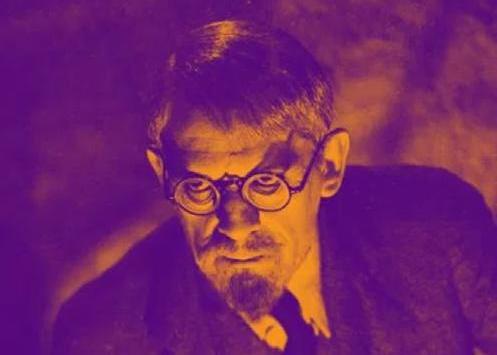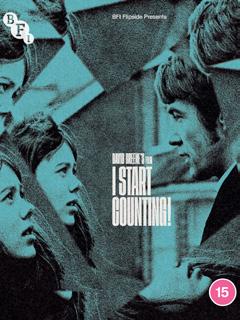
22 minute read
BACK IN THE GAME
With the gradual reopening up of society, for some people thoughts have turned to how we might begin to engage again in intimacy. Rory Finn reports
) Most of us have followed social distancing guidelines and have remained in our social bubbles, to a lesser or greater extent. Casual sex and hook-ups remain technically illegal, a prohibition introduced as part of emergency measures last year – not that as a community we’ve ever paid such legislation much attention. In spite of this, sex is a primal need and no matter how much wanking we might do, for many of us it just won’t cut it. Sooner or later we find we need the intimacy of being up close and personal with another human. But after the months of lockdown isolation, the thought of returning to the pleasures of one to one is causing lots of us to feel nervous, and not in the good way. Even non-sexy intimacy can be overwhelming. Anecdotes are emerging of unexpected eruptions of emotion when people are receiving touch for the first time in months. There’s the friend of a friend who booked a massage to alleviate discomfort of a bad back and how the touch of a masseuse caused them to burst out in tears in front of them. Alex (not his real name) told me about the first hook-up he had after the first lockdown and how the intensity floored him. “I hooked up with a guy I’d be chatting with online for a little while. I was so horny that events took over and he came over. We weren’t doing anything that was unusual for me, a bit of rough role play, but after a while I found myself crying uncontrollably on him as we were playing. I had to stop the session. I felt really embarrassed, crying in front of a stranger, but thankfully he seemed to understand and we spent the next hour just cuddling and chatting.” Others have spoken about their anxiety about the social side of it. Not knowing how to be and what to say. Indeed, what has there been to say while everything was shut and there’s been nowhere to go except the same circular walk and a trip to Tesco. We’ve become used to our miniature lives of only our household to talk to, or our work colleagues through the dull window of Zoom. Suddenly communicating with a stranger feels a tall order. The time off from regular sex has given some people time for reflection. What kind of relationships do they want and what kind of sex is satisfying? We might not be feeling much of a sex drive anyway. The effect of a year of lockdowns and uncertainty has left some of us preferring a nice a cup of tea instead. Rightly we might be feeling nervous about the risk of transmitting or being infected unwittingly with Covid. We’re all waiting patiently in line for our turn to be vaccinated. While the vaccination should reduce the risk of severe Covid disease and reduce transmission, it won’t unilaterally stop it. It’s key that we continue to socially distance for the time being and do our bit to stop the spread. That said, libido is a strong impulse, and those urges can alter our judgement, so if you are going to hook up, there are a few things you can do to reduce the risk to your health and wellbeing. I spoke with Dominic Davies, a sex therapist and psychotherapist who heads up Pink Therapy. We chatted about what you can do. You can use the same kind of safety planning and risk assessments you would normally use, (eg, tell your housemate when you’ll be home, meet in a safe place, what is your safer sex strategy), but add another dimension to it, which is about your emotional needs. Some things to consider:
Advertisement
• Pick wisely who your first hook-up is going to be with. Are they someone who you can feel safe with? Perhaps meet up with someone you already know. Intimacy for the first time might be more emotional than you were expecting. Be kind with one another.
• Start small and build up. Discuss what you want beforehand. Take the tools from the kink community about safe sex: meet with a date in a neutral place first and negotiate consent; discuss desires, likes and limits. There’s a lot that can be learnt even if you prefer things a bit more vanilla.
• Talk about how you feel with your potential date. Chances are they are feeling the same. We’ve all been separated one way or another and deprived of social contact. Share your anxieties with them. If you can’t talk about it, ask yourself if you’re emotionally ready for sex yet. There’s no shame in not being ready. • Talk about your prospective partner’s hooking up history in recent months. Will you be their first partner too? Think about who might be impacted by your decision to meet someone; do you have contact with someone who is more vulnerable to Covid?
• Get up to date with your HIV and STI screening before you venture out on a date. handy links:
• HIV & STI tests available from test.tht.org.uk or www.brightonsexualhealth.com • Directory of LGBTQ+ friendly therapists for counselling/psychotherapy:
www.pinktherapy.com
• More tips and advice on reducing Covid risk during sex: prepster.info/covid-and-sex

NASHVILLE, US
Photographer: EMILY APRIL ALLEN I @EMDASHPHOTOS

"This photo features Curry (she/they, pictured on the right) and Sheri (she/her, pictured on the left), and was taken for my sociallydistanced quarantine photo project Nashville Queers in Quarantine in April, 2020. I didn’t know this at the time, but this was the day they officially started dating, and these were their first photos as a couple. Six months later they were married. Curry and Sheri are unapologetically queer and committed to providing resources, inspiration, and joy to Black and Queer folks in Nashville and beyond. It was an honour to capture this moment for them."
CLASSICAL NOTES

BY NICK BOSTON

BRIGHTON FESTIVAL
) Brighton Festival is back, and with over 90 events, this is an ambitious return, making Brighton the first UK city to launch a multiarts festival since lockdown. The majority of events are outdoors or online, but from May 17, ‘roadmap’ permitting, there will be socially distanced events indoors in various venues.
ISATA KANNEH-MASON - MAY 25
) The classical music events begin with baritone Roderick Williams, joined by two young singers and pianists to perform Schubert’s Schwanengesang, as part of the
Momentum: Our Future, Now
collective, in which distinguished artists support emerging talent (May 17, 8pm). ) Pianist Paul Lewis will perform Mozart, Scriabin and Mussorgsky (May 18, 4pm & 8pm). ) The Chineke! Chamber Ensemble play Schubert’s Trout Quintet (May 19, 8pm). ) The La Nuova Musica perform Monteverdi’s Vespers, with added erotically charged madrigals by Monteverdi to push the boundaries between sacred and secular (May 23, 4pm & 8.30pm). ) New music for cello by Sally Beamish and Lisa Heute links John Newling’s poetic letters, Dear Nature (May 24, 8pm). ) The string players of the Royal Philharmonic Orchestra play music by Jessie Montgomery, Mendelssohn, Ireland and Tchaikovsky (May 27, 4pm & 8pm). ) Lunchtime concerts include violinist Roberto Ruisi and pianist Sten Heinoja playing Debussy and Beethoven (May 17), cellist Adrian Brendel and pianist Joanna MacGregor playing Britten, Bridge and Franck, and pianist Isata Kanneh-Mason playing Mozart, Chopin, Gershwin and Barber (May 25). All events in the Brighton Dome Concert Hall, with social distancing, reduced capacity seating, bookings in household bubbles and other safety measures. D www.brightonfestival.org REVIEW
) John Mayer (1929-2004) was born in Kolkata (formerly Calcutta) to an Anglo-Indian father and Tamil mother. He moved to London in 1952 and worked as a violinist and composer, co-founded the Indo-Jazz Fusions quintet in the ‘60s, and taught composition at Birmingham Conservatoire. His son Jonathan Mayer (b.1975) trained as a sitar player from the age of 16, and he now composes and performs. On this disc, there are works composed by father and son, and Jonathan performs sitar on his own compositions, as well as playing tanpura (like a fretless sitar, providing a harmonic drone) on his father’s Violin Concerto No. 2, from 1978. The violinist here is Sasha Rozhdestvensky, and he shows phenomenal technical dexterity, particularly in the perpetual motion and breathless energy of the concerto’s second movement. The tanpura shimmers in the background of the third movement, Raga, and its improvisatory cadenza for the violin is full of birdlike fluttering. John Mayer’s other composition here is the Concerto for the Instruments of an Orchestra, from 1975. Across its four movements, Mayer often pits orchestral sections – strings, woodwind, percussion – against each other in conversation, occasionally bringing them together. The music is quite episodic, and occasionally lacks continuity, but there are imaginative effects, such as the racing strings Scherzo and spiky woodwind Trio of the third movement. The second movement is the strongest, with its drone background and the winding melody emerging from the strings, before the woodwind takeover, and a solo cello and cor anglais conclude with a heartfelt lament. Jonathan Mayer’s Sitar Concerto No. 2 begins with an extended solo for the instrument, with initial unison string responses developing into a more rhythmic, almost jazzy section. The second movement focuses on repeated patterns, initially a four-note figure on the sitar, with thrumming strings beneath, whereas the third movement has a driving seven-beat rhythm, with a whiff of Hans Zimmer’s film music. It is the most Western harmonically, and the sitar gets livelier and more elaborate as the movement builds, although the ultimate conclusion is inconclusive. Jonathan Mayer’s other work here, the single movement

Pranam, begins with the sitar alone, with the orchestra joining as the sitar settles into a melodic pattern. The tabla joins (here played by Shahbaz Hussain), and rhythmic interest in the orchestra grows. Mayer builds layers of texture in the orchestra, then after a hiatus, the sitar is left keening above dark, low strings, before the violins emerge with a winding upward line. Once again, the tabla helps drive the momentum, and faster rhythmic patterns crescendo, almost burying the sitar, the woodblock adding further driving repetition to an ending reminiscent of John Adams. Debashish Chaudhuri conducts the
BBC National Orchestra of Wales
in strong performances of these fascinating works.
CHINEKE! CHAMBER ENSEMBLE - MAY 19 More info
For more reviews, comment and events, visit: D nicks-classical-notes.blogspot.
co.uk
T @nickb86uk E nbclassical@hotmail.co.uk

ART MATTERS

BY ENZO MARRA
) This month I shall explore Patrick O’Donnell and the dramatic changes that have occurred in his painted and drawn works. The range of his subject matter having included the constituents of his 2010 exhibition You Make Me Gay, which was a collection of 27 oil portraits of his own personal gay icons who have resonated with him and contributed to who he was then and who he is now. The level of fame related to each of them was not relevant, it was the impact the individual had to influence his personal evolution. The Origins series, which he first exhibited at the Naked Eye Gallery, looked at the cosmos from a distance. Exploring the notion of how we all are children of the stars in terms of our atomic makeup, each originating in stardust, nebulae and supernova. The planet/ moon paintings naturally evolved from these and were zooming into these galaxies, still allowing him to use loose and experimental methods of paint application, using the circle set within the square to centre their painted existence. His art is constantly evolving as it needs to remain alive and relevant, he tends to follow ideas that he wants to explore prompted by either an image he has seen, places he has experienced or conversation he has had. Using a range of media, paints, screen prints, ink, charcoal, exploring what he can do with it. His current body of work focuses on the formal elements of edges and shapes and tone, accentuating the presence that can be evoked by their manipulation and their apparent simplicity. Experimenting and making discoveries that can define the direction the work will take or at least note them down to investigate them more thoroughly at another time. The themes of emotional architecture, memory and domestic monoliths and the abstracted deployed poetics of space, becoming more and more visible. His preferred visual language, having developed from a visit to the Jewish Museum in Berlin, where the Holocaust Tower with its dank, claustrophobic and light-deprived spacial qualities made a deep impression on his practice. This prompted a year of working in charcoals, developing austere and sombre compositions in response to significant research into angular direct imagery, suprematist and modernist 2D graphic concerns visible in their finalised appearances. Their painted developments having allowed him to twist the concept into first flat then folded and shaped supports, each distinctly moving towards their next evocation. His next visual journey being suggested by what is being seen in today’s painted adventure.
ALL THAT JAZZ
BY SIMON ADAMS REVIEWS
) JOE LOVANO TRIO TAPESTRY: Garden of Expression (ECM). American saxophonist Joe Lovano has been a Blue Note mainstay for years, but has now moved to ECM for a trio set with modernist pianist Marilyn Crispell and drummer Carmen Castaldi. The results are spectacular, eight songs expressing an emotion or feeling, sometimes a coherent thought, elsewhere a passing glimpse at something barely perceptible. As Lovano explains, “the momentum here is in the melody and the harmonic sequence; the rhythm evolves within each piece in a very free flowing manner.” This results in an exquisite music that is gentle and almost spiritual in content. Lovano’s tenor is sensitive and subdued, his tarogato (a woodwind instrument) an otherworldly addition. Alongside him, Crispell delivers an accompaniment full of interesting contours and sound colours. This is as near a perfect album as you can listen to today. I cannot recommend it highly enough. ) DUKE ELLINGTON ORCHESTRA: Ellington At Newport The Complete 1956 Performances (American Jazz Classics). By the mid-1950s, Duke Ellington’s glittering career as the finest bandleader in jazz was faltering. Newer bands, and the dominant hard bop style, were rendering him obsolete. His career, however, was rescued at the 1956 Newport Jazz Festival when tenor saxophonist Paul Gonsalves stormed his way through 27 choruses of the old Ducal warhorse Diminuendo and Crescendo in Blue, as a result of which he almost single-handed reinvented the jazz solo and revealed just how much energy still existed in the Ellington band. Oddly, when a record of this live appearance appeared, most of it turned out to have been recorded later in the studio. This new double CD includes the entire festival concert, as well those later studio numbers and another short live set from earlier that year. This might be for completists only, but it's a real slice of jazz history. ) ROB BARRON: From This Moment On (Ubuntu Music). Pianist Rob Barron is a mainstay of the London jazz and studio scene, a firstcall pianist highly regarded for his improvisational flair, innate musicality, and deft touch. Concerning his latest project, he explains: “From This Moment On struck me as the perfect name for this album. As well as being the title of the Cole Porter song featured on the record, I felt the optimistic narrative of the lyrics is a positive and hopeful sentiment during this period of crisis in the world. It brings a sense of looking forward to a brighter future.” Amen to that. Eight of the pieces are American Songbook classics, two are Barron originals, and while he sometimes takes the tempo too fast, his adventurousness is evident throughout. Bassist Jeremy Brown and drummer Josh Morrison are strong supporters on what proves to be a fine set.
AT HOME

WITH MICHAEL HOOTMAN
) KARLOFF AT COLUMBIA (Eureka Blu-ray). This is something of an essential buy for horror fans: all the six films that Karloff made for the Hollywood studio between 1935 and 1942. The Black Room has Karloff playing twin brothers (one of whom may, possibly, be evil) in a fantastically atmospheric melodrama. The

following movies are known, unofficially, as the Mad Doctor Cycle and while the dip in budget is noticeable they certainly up the crazy. The Man They Could Not Hang has our hero working on a way of bringing the dead back to life. The process comes in very useful when he is hanged for a crime he sort of committed. His demented plan to get revenge on the judge and jury is barking and therefore more fun than you get from mere rational plotting. The Man with Nine Lives is a variation on the same theme but this time bodies are frozen before being revived. Before I Hang has Karloff using the blood of recently executed prisoners to develop a serum to reverse the ageing process. It doesn’t turn out well. The Devil Commands mixes science with the supernatural as Boris tries to contact his dead wife from beyond the grave. The Boogie Man Will Get You is a comedy take on the crazed boffin genre. They’re short, sweet and in their clear delineation of good and bad, strangely comforting in these troubled times. ) I START COUNTING! (BFI Blu-ray). Jenny Agutter stars as a young girl, Wynne, who is in love with her (adopted) brother George, who may be the perpetrator of a series of murders of young women. Within the first ten minutes he sneakily discards a bloodstained sweater, evidence Wynne destroys, thus showing herself willing to help a possible psychopath out of her love for him. Or is it simply lust? This rarely seen cult classic from 1970 is a wonderful coming-of-age thriller lifted into a league of its own by Agutter’s performance. She’s vulnerable yet brave (in the film’s climax perhaps to a foolhardy degree) while having to contend with the pains of early adolescence. David Greene’s film expertly balances its thriller aspects with strands focusing on Catholicism and, perhaps, sexism. It’s hard to tell if one character’s comments on the murderer not raping his victims as ‘being a waste’, or the pictures of nude women at George’s workplace are reflections of the culture or criticisms of it. The fact that the ‘pure girl’ and her sexually adventurous best friend meet very different and predictable fates further makes this aspect of the film hard to read. The final shot of a childhood home being demolished adds an almost fairytale-style coda to what is a comparative rarity, an almost lost film which deserves rediscovery. ) SWARM (Greensky Games). This is an arcade shoot-‘em-up with a difference. Instead of being stationary while waiting for the next wave of evil aliens to battle, you are suspended over water and the only way you can prevent drowning is by firing out grappling hooks to attach to floating platforms. It takes a while just to get used to staying alive, but it’s pretty easy to master and soon you’re swinging about the playspace like a sci-fi Tarzan. Which, I suppose, is exactly equal to Spiderman. This game is great fun and at first it’s hard not to make a ‘wheeee!’ sound as you pull down on the rope above and are lifted high up into the heavens – which can be a great vantage point to fire on the eponymous swarm of hostile droids. It’s fast paced and each level has enough novelty – from different, more powerful baddies to new weapons and skills such as slowing down time – to give Swarm a greater shelf life. If you haven’t quite found your VR legs, it’s good that each battle is relatively short as the game’s movement intensity can be a bit disorientating. Overall this could be a future classic. Available on Oculus Quest and Rift.


Book Reviews by Eric Page

) Jodi Taylor Another Time, Another Place (£8.99, published by Headline Review). In the days when we could travel, a new book by Jodi Taylor was a real treat and perfect fun holiday reading. I clutch it in Departures and savour it. This is the 12th book in her Chronicles of St Mary’s series, which follows the adventures of the historical researchers of St Mary’s, who are actually time travellers. Taylor’s writing style is great fun, silly, stuffed full of factually curious historical information and sometimes just plain daft. A great read if you like soft sci-fi in the style of Jasper Ford or Douglas Adams. The books, which are wonderful fun, follow the people who work in St Mary’s, imagine a cross between Emmerdale and Dr Who with some James Bond, Mary Beard and Mrs Danvers thrown in. In her latest book we find ourselves thrown into Babylon at its height and the mischief that a new face at St Mary’s causes. Taylor’s books excel in giving us real emotional connections with her wide cast of characters and it’s not all laughter and fun, there some hard lessons from life in these books. She writes excellent narratives, which pound along with a serious tension, wrapped in personal insights and intimate connections with her characters, who just happen to bounce around history observing some really interesting events in real contemporary time, trying not to mess things up and desperately having to deal with more nefarious unscrupulous agents who intend to change history for their own ends. Endlessly fun, inventive, with layers of historical fact layers into these well baked confections. Reading Another Time, Another Place in my unexotic garden was strange, but the book managed to take me far away and give me a thrill of the exotic. For the full series of Chronicles of St Mary’s books, see Taylor’s website: https://joditaylor.online
) Laura Kay The Split (£14.99, published by Quercus). This is a superbly fun book, seeing the opportunity of being blindsided by life as a way of reassessing what’s really important, driving a new self of respect and finding out some home truths along the way. Kay’s protagonist is lovely, sweet Ally, who wakes up on her girlfriend’s boat one morning to discover herself unceremoniously dumped. Shell shocked by this turn of events, and without a job, home or lover, she snatches Malcomb, ‘their’ cat, and runs for her father’s home. It’s great to read a story where an LGBTQ+ character returns to a loving home. Her father encourages her to get back in touch with an old friend and it’s here the novel starts to pick up speed. Together they come up with a ridiculous plan to win their exes back… to revenge-run a half marathon. Given neither of them can run, they enlist the support of athletic, not to mention beautiful, Jo. Their ‘Rom Com’ adventure is laugh out loud funny. Kay writes with a real warmth and nothing in the lives of these people is easy, we learn more about Ally and her ex Emily as they discuss the return of the cat in email exchanges. This is complicated, messy, emotionally cringy stuff, real life in other words. I loved it. It’s not all happy stuff either, and with the marathon running plot driving things on, we get a fully rounded feeling of the main protagonists’ sometimes difficult lives. Jeremy is living with depression and Kay handles this with a deft poise which allows a real dignity to ground him. The Split is a great book, really funny, with a huge focus on family and found family in particular, showing us how important our friendships are, and how an adventure can expose us to change, our fears and the real things we crave. ) George M Johnson All Boys Aren’t Blue (£8.99, published by Penguin). Wow, what an extraordinary book from LGBTQ+ activist George M.Johnson. This is their powerful memoir-manifesto, which explores childhood, adolescence, and college years, growing up under the duality of being black and queer in New Jersey and Virginia. In a series of essays, we read of hideous bullying, attacked and teeth kicked out at only five years old, of precious times with their Grandmother, filled with understanding, patience and unconditional love. Johnson shares their life in unflinching detail, with no excises or apologies – this is fierce reclaiming of space for young queer back men. The pain, so candidly written about, is accompanied by healing they’ve
learned and shared. They write with searing passion about the experiences which have forged, changed and defined them, calling out the daemons who have attempted to stifle, and naming the forces, like toxic masculinity, which aim to silence men about celebrating difference. With insights into sex, love, gender identities, families, inequality, consent and brotherhood, Johnson’s all-seeing American eye picks out the details in this rich intersecting tapestry of living and serves us black joy. It’s a roadmap for young queer people of colour. We meet characters, like the eponymously named Hope, who inspire and drive change. Johnson’s clarion call is for personal responsibility and commitment to community, for people to understand themselves and celebrate their power, to own their faults and love their scars. This is a vehemently vulnerable memoir, told with warmth and humour, sharing hard-won insights and demanding to be seen. It throbs in the hand with the power of a life lived with ferocious passion and urgent knowledge to share. ) Emery Lee Meet Cute Diary (£12.99, published next month by QuilTreeBk). Noah Ramirez thinks he’s an expert on romance and writes a hugely popular blog, Meet Cute Diary, which is a collection of trans happily ever afters… but he’s made it all up, the stories are fake. His fantasies of a trans boy afraid to step out of the closet has become a beacon of hope for trans readers across the globe. Then a troll exposes the blog as fiction, Noah’s world unravels. He seeks a way to make the fiction real. He meets Drew, who is willing to fake-date Noah to save the diary. As they pose, real emotional connections start to grow and change the way things are supposed to be working out. Emery Lee’s tone is perfect here, capturing all the tremulous expectations of young love, the pressures of being true and the hardship of honesty. Their narrative energy is boundless, the book leaps forward into unexpected places but keeps the main protagonists and their desire to be seen in full focus. This is a great book for younger trans and non-binary readers, reassuring, validating and reminding us that love is fully inclusive and first love is awkward and thrilling as hell and that sometimes we just need to have the courage of our convictions and take a wild leap into possibility.

